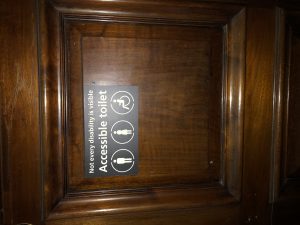While we were in Edinburgh and more specifically the Downtown area it was somewhat hard to get around. While walking you can begin to notice very quickly how it is almost all cobblestone. This makes it difficult to walk around because none of it is leveled, even I was tripping while I walked. Now, imagine if you had a difficult time walking around and you had tripped. I understand people go to Edinburgh for the shops, history and the experience but it’s going to be hard to if it’s hard to get around. Finding a way for everyone to be mobile will be a hard task but it’s something that needs to be done in order for everyone to enjoy the area.
I also saw how while in Glasgow they had a lot more availability for people who have disabilities to be welcome at any place they might be going. While in Edinburgh, I noticed they didn’t have Braille anywhere and they didn’t have many lifts. One thing I did find out was how they had sign language on the public buses for people who couldn’t hear when their spot was coming up. This is at least a sign of progression in the right direction for a population that is not always looked at.


